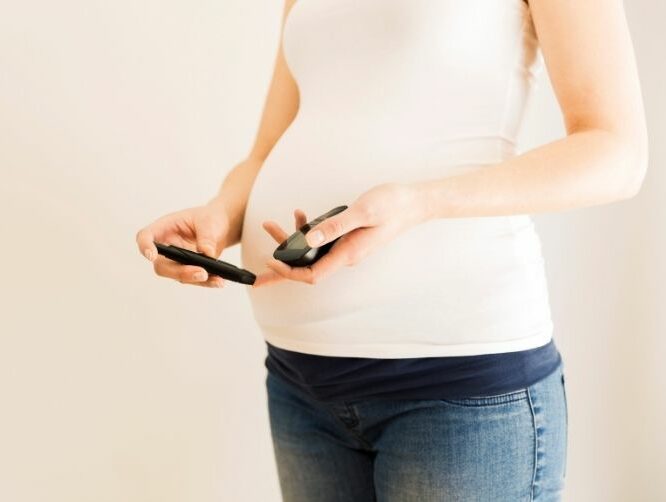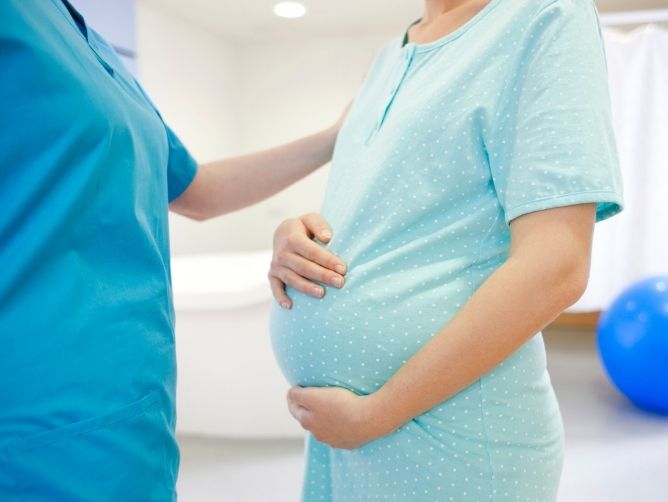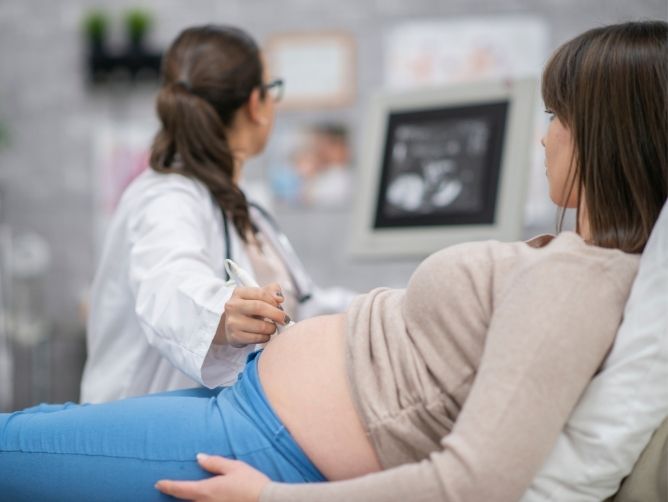Experiencing contractions when you are expecting a baby can be worrying, especially when it is your first pregnancy and you are unsure if they are “false” Braxton Hicks contractions or actual labour contractions. Here’s how to tell the difference.

Braxton Hicks contractions: What are they?
Braxton Hicks contractions are sometimes called practice, or false contractions. They occur in the uterus and condition it for giving birth. They also prepare the cervix for the delivery. This is a normal occurrence; it is a natural part of pregnancy and not an indication that you are going into labour.
What causes Braxton Hicks contractions?
Everyday events can cause Braxton Hicks contractions, including:
- Vigorous rubbing of your uterus
- Increased activity by you, or your baby
- Sexual intercourse
- Dehydration
- Having a full bladder
- Stress
- Inadequate sleep
These contractions usually stop when you change position or activity. They are generally painless tightenings which are neither persistent nor regular.
What do Braxton Hicks contractions feel like?
Braxton Hicks contractions feel like the muscles across your belly are tightening, and this sensation can last for up to 1 minute at a time. They can feel uncomfortable but shouldn’t be painful. If you put your hands on the abdomen during the contractions, you will be able to feel the uterus stiffening.
When can you expect to feel them?
You may experience Braxton Hicks contractions during the third trimester of your pregnancy. Each woman has a different experience so however you feel them, know that they are perfectly normal and not a sign that you are going into labour.
How do you tell the difference between Braxton Hicks and labour contractions?
If you feel painless tightening of your uterus, it is likely to be Braxton Hicks contractions. They are usually irregular, not persistent and unaccompanied by any bleeding. Think of it as your uterus getting in some practice! It is thought that they play a vital role in toning the uterine muscles in preparation for the birth process and in promoting blood flow to the placenta.
In the last month of your pregnancy, you will want to consider the possibility that they may be labour contractions. But how do you tell the difference?
Here are some telltale signs:
- Consistency – Labour contractions occur at regular intervals and last between 30 and 80 seconds. Braxton Hicks contractions do not have a consistent pattern and are shorter in duration.
- Increasing frequency – Braxton Hicks contractions do not increase in frequency. Labour contractions, on the other hand, become more frequent the closer you get to delivery. Timing the frequency of your contractions is one way to know when you should head to the labour ward.
- Continuity – Braxton Hicks contractions will stop, especially when you change position or activity. Labour contractions will increase in intensity over time and there will be no break in that pattern once they start.
- Intensity and location of discomfort – Labour contractions are painful, and you will feel them throughout your abdomen and lower back. The pain can also spread to your sides and legs. Braxton Hicks contractions, on the other hand, are not painful and only cause discomfort on the front of your abdomen.
- Having other signs of imminent labour – You may experience an increase in vaginal discharge a few days or hours before going into labour so contractions felt after that are likely to be the start of labour pains. A more obvious sign of labour is when your water breaks.
Other reasons you may feel pain
Abdominal pain and discomfort can be confused for Braxton Hicks contractions but may simply be:
- Excess gas
- Ligament pain in the lower abdomen or groin area on one or both sides
- Constipation
- Other surgical problems like appendicitis or kidney stones
When to see a doctor
If you are close to your due date and unsure whether you are experiencing Braxton Hicks contractions or if you are really in labour, check in directly with your doctor. If they are labour contractions, you can then follow your birth plan and look forward to welcoming your baby. If you experience painful contractions before your due date, especially before your third trimester, you should seek immediate emergency care as this could be a sign of pregnancy complications or preterm birth.
Article reviewed by Dr Natalie Chua, obstetrician & gynaecologist at Parkway East Hospital (Source)



